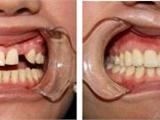A Grand View of Eating Manner for Dazha Crabs
The ways to eat Chinese mitten crabs can be said to be varied and diverse. Compared with the temporary popularity of spicy crabs, steamed mitten crabs have been popular for a long time. This is because people eat crabs mostly to taste their fresh original flavor, and the method is simple, so families can enjoy the lotus island mitten crabs.
To make steamed crab, just wash the crab, tie it securely with string, and steam it until cooked. In order to keep the original flavor of the crab, it is preferable to use a steamer instead of a pot.
Drunk crab is also a common way to eat crabs. Place the crab in clear water for two days, then take it out of the water and let it sit for a day without water. Then pour wine into its mouth, add an appropriate amount of salt, cooking wine, green onion, ginger, and sugar. Put it into a small-mouthed jar, cover it tightly, and seal it. Place it in the refrigerator for cold storage. After a week, it can be eaten directly. Drunk crab can also be stewed with chicken or squab, resulting in a rich and nutritious broth.
Sautéed crab with pepper and salt paired with wine is an excellent combination. Cut live clean crabs into pieces, soak them in green onions, ginger, and cooking wine for a few minutes, coat them with flour, and fry them in oil until golden brown. Add tofu, ginger, green onion, salt, soy sauce, etc., and stew until flavorful. The best wine to pair with this dish is huangjiu, and among huangjiu, hua雕is the best. Alternatively, you can pair it with a cold beer to enjoy a modern twist on the mitten crab!
Stir-fried crab with scallions and black bean sauce has a rich flavor that greatly stimulates appetite. If you prefer a Western-style flavor, you can add some XO sauce, and place noodles under the crab for a classic Hong Kong-style preparation.
Original Flavor vs Vinegar Sauce
Every year during the season when crabs are fat, Yangcheng Lake mitten crabs are always the sought-after delicacy. They have blue backs, white bellies, full claws, yellow fur, and strong bodies, with tender and delicious meat, earning them the title of "King of Crabs." The traditional method for authentic mitten crabs is steaming, emphasizing the original shape and flavor of the crab, with an orange-yellow color and fresh crab meat. Hence, there is a saying: "When crab meat is served, all other flavors become bland."
Shanghai is near the crab production area, and during the autumn and winter seasons, there is a steady supply of fresh mitten crabs. Crab feasts can last from September until the New Year. Guangzhou is farther from the crab production area, so crabs are usually only available in October. There's a saying: "Round umbilicus in September, pointed umbilicus in October," meaning that female crabs are fattest in the lunar ninth month, while male crabs are fattest in the lunar tenth month. Shanghai people love to enjoy crabs in pairs at the end of September and the beginning of October. There are certain differences between the eating habits in Hong Kong and Shanghai. Hong Kong-style steamed crabs use perilla leaves to remove the fishy smell of the crab, advocating eating the crab fresh and hot without any dipping sauces, using only scissors, pliers, and spoons as tools.
Shanghai people traditionally use eight tools when eating crabs. Nowadays, some functions of these tools have been combined into one for convenience. When eating, they emphasize the preparation of vinegar sauce, usually made by proportionally mixing vinegar, sugar, and ginger juice. It is said that when eating mitten crabs, Shanghai people choose restaurants based on the taste of the vinegar sauce.
Eating Techniques
Those who don't know how to eat crabs will bite down on the shell and meat together, chew a few times, and spit out both the shell and the meat, leaving very little crab actually consumed. True connoisseurs eat crabs like brushing teeth, placing half a crab sideways into their mouths, biting open the shell piece by piece, allowing large chunks of crab meat to smoothly enter the mouth. Some people eat crabs by first lifting the shell, sucking the roe, then breaking the body into two halves, eating one side before moving to the other, and finally consuming the claws and legs. These people do not know how to eat crabs properly. The correct way is to eat the claws and legs first, keeping the shell closed to retain the heat. After eating the claws and legs, lift the shell, enjoy the roe, and consume all the crab meat without wasting any. When eating the claws, start by eating the joints, then suck the claw meat into your mouth.
Crabs must be eaten piping hot. Therefore, it is best to steam and eat them simultaneously. Here is a method for steaming crabs using a rice cooker: first put a small amount of water in the pot, then place a steamer rack inside. Once the water boils, place the crabs in the pot and steam for fifteen minutes. After removing the first crab, place another one in the pot to cook. By the time you finish the first crab, the second one will be ready. This way, you can enjoy each crab while it is still hot.
Autumn Crab Eating Guide
Late autumn to early winter is the peak season for blue crabs, which are both good quality and cheap, making it the perfect time to indulge.
Selecting Crabs: How to pick crabs? Without a doubt, the crabs must be fresh, so you must choose live ones. Size doesn't matter, but they must be heavy. Female crabs have more roe, so they are better. If you don't know how to distinguish between males and females, you can ask someone else picking crabs for advice.
Cooking Methods: Crabs can be eaten raw, but they need to be marinated with alcohol and other seasonings for a few days, so eating them raw isn't simple. Moreover, if the crabs aren't fresh, it could be dangerous. Crabs can be stir-fried, steamed, or boiled. Stir-frying is more complicated, so most people prefer to steam or boil them.
Cleaning Crabs: Regardless of the cooking method, the crabs must be cleaned first. You can soak the crabs in the sink for a while, then use a brush (an old toothbrush works) to scrub off the mud and sand from the crabs' bodies. Be careful not to get bitten by the crabs!
Steaming/Boiling Crabs: Once the crabs are cleaned, you can proceed to steam or boil them. Bring the water to a boil before placing the crabs in the pot.
Preparing Dipping Sauce: While the crabs are steaming or boiling, you can prepare the dipping sauce. First, find a fresh piece of ginger. Wash the ginger, slice it thinly, and place it in a bowl. Pour some vinegar (Zhenjiang black vinegar is best) over the ginger slices, then add some sugar. Use chopsticks or a spoon to mix the sauce thoroughly.
After preparing the sauce, check if the crabs are cooked. Blue crabs turn red when they're done.
Eating Crabs: Once the crabs cool slightly, they are ready to eat. First, remove the round lid on the crab's body. If it's a female, you'll see golden crab roe near the belly. This is the most delicious part of the crab. You'll also notice some white, bristle-like things near the thighs; these are inedible.
After enjoying the roe, move on to the crab meat. The meat is white and resembles fish meat. It's best to break the crab in half to expose the white crab meat. Most people eat the crab legs last because it takes time and there isn't much meat, but people still try to finish them. Some find the leg meat particularly tasty. Eating the legs is also a good opportunity to chat with family and friends. To extract the meat from the legs, you can crush the hard shell with special crab-eating tools or use a toothpick or fork to pull out the meat. Remember: crab shells are hard, and the legs are sharp. Be careful not to damage your teeth!
Final Step: After eating the crabs, dispose of the shells immediately, as they are quite smelly. The pot used for steaming or boiling crabs should be thoroughly cleaned. Of course, it's best to wash your hands with soap as well.
Small Tips for Eating Mitten Crabs
Although mitten crabs are delicious, they are cold in nature and contain damp toxins, so people with skin diseases or those prone to skin sensitivity should avoid eating them. People with weak constitutions (those who often feel cold in their hands and feet, dizzy, or tired) should restrain themselves from eating crabs to avoid stomach discomfort. Additionally, the cholesterol level in crab roe is high, so people with hypertension, heart disease, or arteriosclerosis should not eat too much. Diabetics and people with kidney disease who have high blood pressure should also limit their consumption of mitten crabs. Pay attention to the cooking method when eating crabs. Since mitten crabs live in the muddy trenches of rivers and lakes and eat animal carcasses, their intestines contain a lot of bacteria. Moreover, crabs contain abundant protein (several times higher than pork or fish), which decomposes quickly after death, leading to rapid bacterial proliferation and spoilage. Therefore, do not eat dead crabs or those that are not thoroughly cooked.
When eating crabs, use ginger vinegar as a seasoning to aid digestion and help kill bacteria. Adding perilla leaves to the steaming process can neutralize the toxicity of the crabs. Pairing crabs with alcohol can help eliminate bacteria and counteract the coldness of the crabs. If you experience gastrointestinal discomfort after eating crabs, drink water boiled with ginger slices while it's hot to warm your stomach. Ancient medical texts record: Eating persimmons with crabs causes abdominal pain and diarrhea. Crabs are rich in protein, while persimmons contain a lot of tannins. Eating them together can cause coagulation and hardening. Moreover, both crabs and persimmons are cold in nature, and excessive consumption can lead to discomfort, causing symptoms such as abdominal pain and vomiting, known as gastric persimmon syndrome.
Cooking and Eating Techniques for Mitten Crabs
The water quality for raising mitten crabs is very important. In the past, Guangdong imported mitten crabs from Hongze Lake, paying in advance every June and July, and transporting them to Guangdong every other day in late autumn. Later, due to severe water pollution in Hongze Lake, the source was shifted to Yangcheng Lake, but the quantity was limited. Now, most Yangcheng mitten crabs sold in the market are counterfeit, and customers often laugh it off. Mitten crabs are categorized as "female in September, male in October," meaning that female crabs are best in September, and male crabs are best in October. As long as you follow the seasonal guidelines and distinguish between male and female crabs, you won't be deceived too deeply.
Mitten crabs must be cooked (in Wuxi dialect, "zha" sounds like "zhu"), to ensure the crab retains its moisture. It’s not just regular steaming; mitten crabs intended for extracting crab powder must be cooked in cold water, otherwise, the crabs will struggle when scalded, causing their legs to fall off first and the crab roe to be lost. Whole mitten crabs must be securely tied before being placed in boiling water to cook (the term "steamed whole" commonly used in restaurants is actually amateurish). Of course, it's best to add a bit of ginger, green onion, perilla leaves, and cooking wine to the boiling water. A well-cooked mitten crab, when opened, does not require vinegar; simply touch the crab meat with your tongue and detect a slight sweetness, indicating it is a good crab. Eating mitten crabs requires proper etiquette and technique, and the most classic way is to eat a whole crab and still have it remain intact. Start with the crab lid, then break the crab apart. Eat the crab meat along the fibers, throwing the shells of the abdomen into the crab lid. The crab legs and claws are the hardest parts to eat; after finishing them, arrange them neatly on both sides. Finally, place the crab umbilicus back onto the lid, flip it over, and place it between the crab legs, thus forming a complete crab again.
In ancient times, people were afraid of the appearance of crabs and dared not eat them. Crabs are crustaceans that undergo about ten molts from larvae to adulthood, hence the name "crab" (解 means liberation). Also, since crabs walk sideways, they are collectively called "pang crabs." Enchanted by the freshness of crabs, nothing—whether high protein content or the toxicity of crab roe—can stop our affection for mitten crabs.



